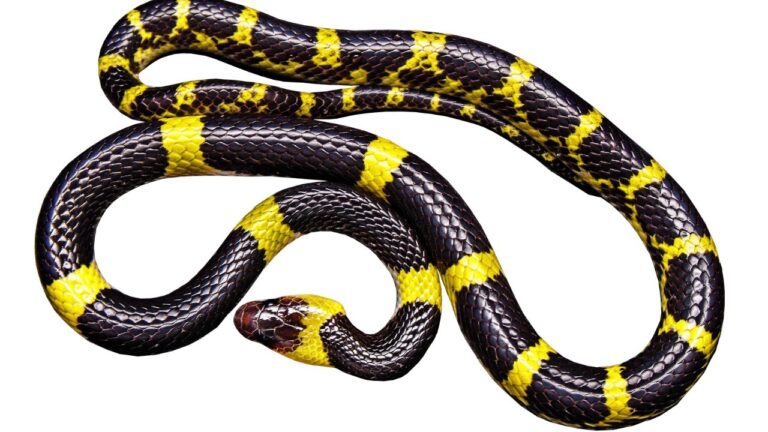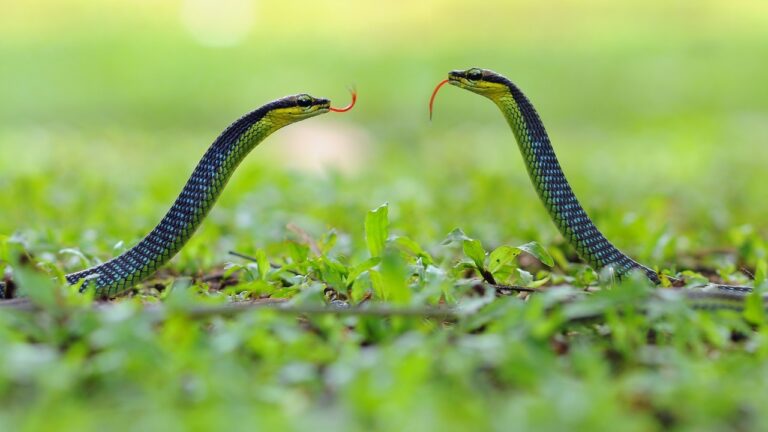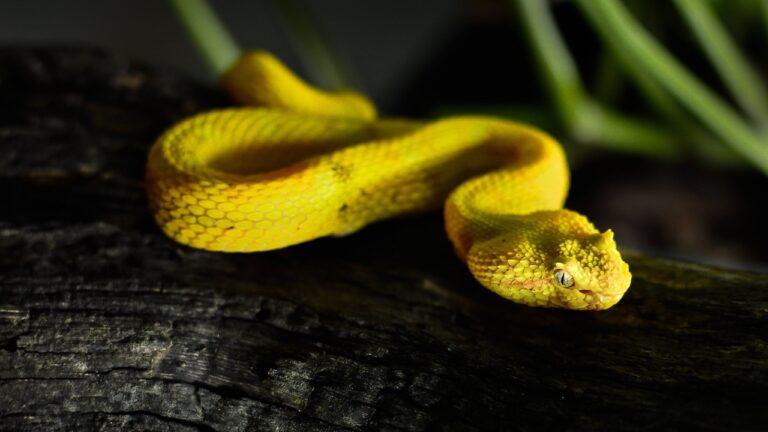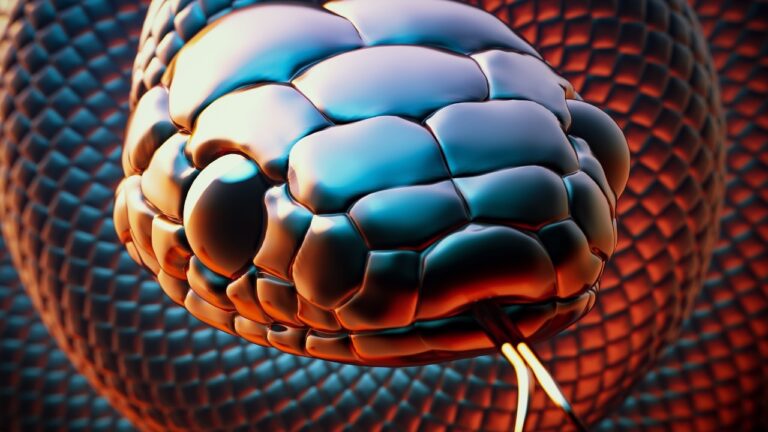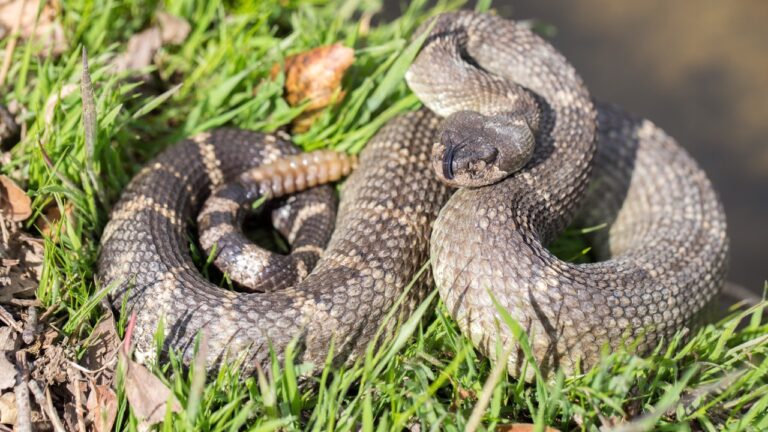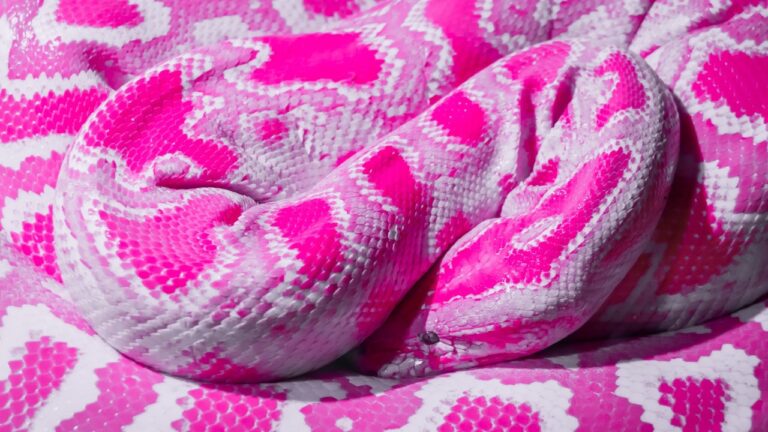Snake Feeding Habits: Optimizing Nutrition and Schedules
Understanding snake feeding habits and their importance
Snakes are fascinating creatures with unique feeding habits that play a crucial role in their overall health and well-being. Understanding these feeding habits is essential for snake owners and enthusiasts, as it allows them to provide the optimal nutrition and care for their scaly companions.
Feeding habits refer to the specific dietary preferences and behaviors exhibited by snakes in their natural habitat. These habits can vary significantly depending on the species, size, and ecological niche of the snake. By delving into the intricacies of snake feeding, we can gain valuable insights into their nutritional requirements and develop effective feeding strategies that promote their overall health and longevity.
Appreciating the importance of snake feeding habits is paramount to ensuring the well-being of these remarkable creatures. Snakes are carnivorous creatures and have evolved to thrive on a diet primarily consisting of animal protein. The specific types of prey they consume can vary, from small rodents and birds to amphibians and even other snakes. Understanding their dietary needs allows us to replicate their natural feeding patterns in captivity, creating an environment that closely mimics their wild habitat.
In this article, we will explore the various types of snake diets, the factors that influence their feeding habits, and the best practices for feeding snakes in captivity. Whether you are a seasoned snake owner or a curious beginner, this comprehensive guide will provide you with valuable insights and practical tips to optimize your snake’s nutrition and feeding routines.
So, let’s slither into the captivating world of snake feeding habits, shall we? Stay tuned for an enlightening journey that will empower you to become a knowledgeable and responsible snake owner.
Types of Snake Diets
When it comes to snake diets, these remarkable reptiles exhibit a fascinating array of feeding habits. From carnivorous snakes to insectivorous snakes and even piscivorous snakes, their dietary preferences can vary significantly. Understanding these different types of snake diets is crucial for ensuring their nutritional needs are met and promoting their overall health and well-being.
Carnivorous Snakes
Carnivorous snakes, as the name suggests, primarily feed on other animals. They are skilled predators, capable of consuming a wide range of prey, including rodents, birds, lizards, and even other snakes. With their sharp teeth and powerful jaws, carnivorous snakes are well-equipped to capture and consume their prey.
One of the most well-known examples of a carnivorous snake is the boa constrictor. These large, muscular snakes are constrictors, meaning they wrap their bodies around their prey and squeeze until it succumbs to the pressure. Boa constrictors typically feed on small mammals, such as rats or rabbits, but can also consume larger prey when given the opportunity.
Insectivorous Snakes
Insectivorous snakes, as the name implies, have a diet primarily consisting of insects. These snakes play a valuable role in controlling insect populations in their natural habitats. They have evolved specialized adaptations to capture and consume their prey, such as slender bodies and small, sharp teeth.
Many species of colubrid snakes, including garter snakes and corn snakes, fall into the category of insectivorous snakes. These snakes have a diverse diet that includes a variety of invertebrates, such as worms, slugs, and spiders. While insects form the bulk of their diet, they may also consume small vertebrates, including frogs and small rodents.
Piscivorous Snakes
Piscivorous snakes are specialized predators that exclusively feed on fish. These snakes are typically found in aquatic or semi-aquatic environments, such as rivers, lakes, and swamps. They have adapted to life in the water, with streamlined bodies and the ability to swim with ease.
One example of a piscivorous snake is the water snake. These slender, agile snakes are excellent swimmers and are capable of capturing fish underwater. They use their sharp teeth to grasp and secure their prey, often swallowing it whole.
Understanding the different types of snake diets is essential for providing appropriate nutrition to these captivating creatures. Whether you have a carnivorous snake, an insectivorous snake, or a piscivorous snake, tailoring their diet to their specific needs is critical for their well-being. By providing a varied and balanced diet, you can ensure that your snake thrives in captivity.
To learn more about optimizing snake nutrition and developing feeding plans, check out our snake feeding guide. It provides valuable insights and practical tips to help you create a healthy and satisfying feeding routine for your slithering companion.
Factors Affecting Snake Feeding Habits
Understanding the factors that influence snake feeding habits is essential for providing optimal nutrition and ensuring the health and well-being of these fascinating creatures. Several key factors come into play when it comes to a snake’s feeding preferences. Let’s delve deeper into these factors to gain a comprehensive understanding.
Species and Size
The species and size of a snake play a crucial role in determining its feeding habits. Different snake species have varying dietary requirements and preferences. For instance, while some snakes are carnivorous and thrive on a diet of small mammals and birds, others are insectivorous, relying on a diet primarily composed of insects and worms. Additionally, the size of the snake also affects its feeding habits. Larger snakes require larger prey items, while smaller snakes need smaller prey items to meet their nutritional needs.
Natural Habitat and Prey Availability
The natural habitat of a snake and the availability of prey heavily influence its feeding habits. Snakes adapt their diets to the resources available in their environment. For example, snakes living in aquatic habitats, such as piscivorous snakes, predominantly feed on fish. Similarly, snakes in arid regions may have a diet consisting primarily of small mammals, as these are more abundant in their surroundings. Understanding a snake’s natural habitat and the types of prey available in that environment is crucial for replicating a suitable diet in captivity.
Metabolism and Digestive System
The metabolism and digestive system of a snake are intricately linked to its feeding habits. Snakes are ectothermic, meaning their body temperature is regulated by their environment. This influences their metabolic rate and determines how often they need to eat. Some snake species have a slower metabolism and can go for extended periods between meals, while others have a higher metabolic rate and require more frequent feedings. Additionally, the digestive system of a snake is designed to efficiently process and extract nutrients from prey items. Factors such as the size of the snake’s stomach and its ability to produce digestive enzymes play a role in determining its feeding habits.
Understanding these factors is crucial for successfully feeding snakes in captivity. By considering the species and size of the snake, replicating its natural habitat and prey availability, and taking into account its metabolism and digestive system, snake owners can develop appropriate feeding schedules and ensure their pets receive the essential nutrients they need to thrive.
For more information on snake feeding habits, check out our comprehensive snake feeding guide and discover valuable tips and insights on creating the perfect feeding routine for your scaly friend. Remember, a well-fed snake is a happy and healthy snake.
Feeding Schedules for Snakes
Ensuring the right feeding schedule for your snake is crucial for their overall health and well-being. By providing them with the appropriate frequency of feedings, proper portion sizes, and adjusting their feeding schedule for growth and seasonal changes, you can optimize their nutrition and ensure they thrive in captivity.
Frequency of Feedings
The frequency of feedings for snakes varies depending on their species, age, and size. Generally, snakes are fed once every 5 to 14 days, with some species requiring more frequent meals. It is important to research the specific dietary needs of your snake to determine the best feeding schedule for them.
Young snakes, especially hatchlings, have higher metabolisms and tend to eat more frequently than adult snakes. As they grow older, their feeding frequency can be gradually reduced. However, it is essential to monitor their body condition and adjust the feeding schedule accordingly. Consistency is key when it comes to feeding your snake, as sudden changes in their feeding schedule can cause stress and digestive issues.
Proper Portion Sizes
Providing your snake with the right portion size is crucial to ensure they receive the necessary nutrients without overfeeding them. Snakes are known for their ability to consume prey that is larger than their head, thanks to their flexible jaws and stretchy skin. However, this doesn’t mean they should be fed excessively large meals.
A good rule of thumb is to offer a prey item that is about the same width as the snake’s widest part of the body. This ensures they can easily swallow the prey without straining their digestive system. Avoid overfeeding, as it can lead to obesity and other health problems in snakes. Underfeeding, on the other hand, can result in malnutrition and stunted growth.
Adjusting Feeding Schedule for Growth and Seasonal Changes
As your snake grows, their nutritional needs change. Young snakes require more frequent meals to support their rapid growth, while adult snakes have lower energy requirements and can be fed less frequently. It is important to monitor your snake’s body condition and adjust their feeding schedule accordingly.
Additionally, snakes may exhibit changes in their feeding behavior based on seasonal cues. Some species may reduce their appetite or go through periods of fasting during the winter months. This is a natural response to the changing environment and should be taken into consideration when planning their feeding schedule.
By understanding the natural feeding behavior of your snake and making adjustments based on their growth and seasonal changes, you can provide them with a balanced and appropriate diet that promotes their overall health.
Remember, establishing a proper feeding schedule for your snake is crucial, but it is equally important to consider other factors such as their natural habitat, prey availability, and metabolic rate. By taking a holistic approach to their nutrition, you can ensure they thrive in captivity.
For more information on snake feeding schedules and tips, check out our snake feeding guide and snake feeding tips. And if you’re looking for specific recommendations on feeding frequencies, portion sizes, and more, our snake feeding chart is a valuable resource to guide you in creating a personalized feeding plan for your snake.
Nutritional Requirements for Snakes
Snakes, like all animals, have specific nutritional requirements to thrive and maintain optimal health. To ensure that your snake is receiving the proper nutrients, it is essential to understand their essential nutrients, the importance of feeder prey types and variety, and the role of supplementing with vitamins and minerals.
Essential Nutrients
Snakes require a balanced diet that provides them with all the necessary nutrients for growth, energy, and overall well-being. These essential nutrients include proteins, fats, carbohydrates, vitamins, minerals, and water. Each nutrient serves a vital role in the snake’s body, from building and repairing tissues to supporting metabolic processes.
Proteins are particularly crucial for snakes, as they are the building blocks of muscle, skin, and other body tissues. Snakes are carnivores and rely on a diet rich in protein to meet their dietary needs. The proteins they consume are broken down into amino acids, which are then utilized for various biological functions.
Fats are another essential nutrient for snakes, providing them with a concentrated source of energy. Fats aid in the absorption of fat-soluble vitamins and play a role in maintaining healthy skin and scales. While snakes require fats in their diet, it is important to provide them with the right balance, as excessive fat intake can lead to obesity and other health issues.
Carbohydrates are not as critical for snakes as they are for other animals, as snakes primarily rely on proteins and fats for energy. However, some snake species may consume small amounts of carbohydrates in the form of plant matter or the stomach contents of their prey.
Vitamins and minerals are micronutrients that snakes need in small quantities to support various physiological functions. Snakes obtain these nutrients through their diet, but it is important to ensure that they are receiving a diverse range of prey items to obtain a broad spectrum of vitamins and minerals.
Feeder Prey Types and Variety
When it comes to feeding snakes, providing a varied diet is crucial for their overall health and well-being. Snakes in the wild have access to a diverse range of prey items, which allows them to obtain a wide array of nutrients. In captivity, it is essential to replicate this variety to ensure that snakes receive all the necessary nutrients.
Feeder prey types can include various rodents, such as mice and rats, as well as other small animals like birds and amphibians. It is important to rotate the types of prey you offer to your snake to avoid nutritional imbalances that can occur from feeding the same prey item exclusively. Offering a variety of prey items can help ensure that your snake receives a more complete nutritional profile.
To determine the appropriate feeder prey size for your snake, you should consider the snake’s age, size, and species. Snakes can be classified as hatchlings, juveniles, or adults, and each stage has specific dietary requirements. Providing appropriately sized prey items ensures that your snake can consume its food comfortably and safely.
Supplementing with Vitamins and Minerals
While a varied diet is ideal for meeting a snake’s nutritional needs, it can be challenging to provide every essential nutrient solely through feeder prey. As a result, it may be necessary to supplement your snake’s diet with vitamins and minerals.
Supplements can help fill in any nutritional gaps that may exist in your snake’s diet. They are available in various forms, including powders and liquids, and can be dusted onto feeder prey or added to their water source. It is crucial to follow the instructions provided by the supplement manufacturer and consult with a veterinarian specializing in reptiles to ensure proper dosage and administration.
Supplementing with vitamins and minerals can be particularly important for captively bred snakes, as their diet may not always provide the same nutritional variety as their wild counterparts. By incorporating supplements into their feeding routine, you can help ensure that your snake is receiving all the necessary nutrients for optimal health.
In the next section, we will discuss the best practices for snake feeding, including proper handling and enclosures, observing feeding behaviors, and avoiding common feeding mistakes.
Continue reading: Best Practices for Snake Feeding
Best Practices for Snake Feeding
When it comes to feeding snakes, there are several best practices that every reptile enthusiast should be aware of. From proper handling and enclosures to observing feeding behaviors, these practices can help ensure the health and well-being of your slithery friends.
Proper Handling and Enclosures
One of the most important aspects of snake feeding is ensuring that the snake is in a suitable environment. Proper enclosures provide a sense of security for the snake and help create a stress-free feeding experience. Make sure the enclosure is spacious enough for the snake to move comfortably and has appropriate hiding spots.
When it comes to handling snakes during feeding, it is crucial to exercise caution. Snakes can become defensive or stressed during feeding, so it’s important to approach them calmly and confidently. Always remember to wash your hands before and after handling to prevent the spread of bacteria and parasites.
Observing Feeding Behaviors
Observing feeding behaviors is a valuable tool for snake owners. By closely watching how your snake interacts with its food, you can gain insights into its health and appetite. Look for signs of excitement or hesitation during feeding. A healthy snake will typically strike at its prey with precision and consume it eagerly.
If you notice any abnormal behaviors, such as refusing food or regurgitation, it’s essential to investigate the underlying cause. It could be a sign of stress, illness, or other issues that require attention. Consulting a veterinarian who specializes in reptiles can provide valuable insights and guidance.
Avoiding Overfeeding or Underfeeding
Maintaining a proper feeding schedule is crucial to prevent overfeeding or underfeeding. Snakes have specific metabolic needs, and feeding them too much or too little can have detrimental effects on their health.
To ensure you’re providing the right amount of food, it’s important to consider factors such as the snake’s size, species, and metabolic rate. Feeding charts and guides can be helpful references when determining the appropriate portion sizes and frequencies. You can find useful resources like the snake feeding chart or the snake feeding guide on reputable reptile care websites.
Additionally, it’s important to adjust the feeding schedule as your snake grows or experiences seasonal changes. Young snakes generally require more frequent feedings, while adult snakes may need less frequent meals. By understanding your snake’s nutritional requirements and monitoring its body condition, you can ensure a healthy feeding routine.
Remember, consistency is key when it comes to snake feeding. Establishing a regular feeding routine and sticking to it can help prevent digestive issues and behavioral problems.
In the next section, we will explore the nutritional requirements for snakes and delve into the essential nutrients they need to thrive.
To learn more about snake feeding tips and tricks, check out our comprehensive guide on snake feeding tips.
Common Mistakes to Avoid
When it comes to feeding your snake, there are several common mistakes that snake owners should be aware of in order to ensure the health and well-being of their scaly companions. By avoiding these pitfalls, you can help optimize your snake’s nutrition and overall feeding experience.
Feeding Inappropriate Prey
One of the most crucial aspects of snake feeding is providing appropriate prey for your slithering friend. Snakes have specific dietary requirements based on their species and size, so it’s important to do your research and understand what types of prey are suitable for your particular snake. Feeding your snake inappropriate prey can lead to nutritional deficiencies or digestive issues, which can have serious consequences for their health.
For example, if you have a carnivorous snake, it’s essential to provide them with a diet consisting of appropriate prey items such as mice or rats. Feeding them insects or fish, which are more suitable for insectivorous or piscivorous snakes, could result in inadequate nutrition and potential health problems.
To ensure you’re providing the right prey for your snake, consult reputable sources such as a snake feeding guide or consult with a veterinarian specializing in reptiles. They can provide valuable insights and recommendations based on your snake’s specific needs.
Overfeeding
Another common mistake snake owners make is overfeeding their serpents. It can be tempting to offer your snake larger or more frequent meals, thinking it will keep them satisfied or help them grow faster. However, overfeeding can lead to obesity and other health issues in snakes.
Snakes have a slower metabolism compared to mammals, and their bodies are designed to handle periods of fasting. Overfeeding can put unnecessary strain on their digestive system and result in weight gain, which can lead to a variety of health problems.
To determine the appropriate portion size and feeding frequency for your snake, refer to a snake feeding chart or consult with an experienced reptile veterinarian. They can help you create a feeding plan that takes into account your snake’s species, size, and growth stage.
Inconsistent Feeding Schedule
Consistency is key when it comes to snake feeding schedules. Snakes thrive on routine, and irregular feeding times can disrupt their digestive processes and lead to stress or refusal to eat.
Establishing a regular feeding routine is essential for maintaining your snake’s overall health. Whether you choose to feed your snake once a week or every two weeks, stick to the schedule and ensure that meals are offered at the same time of day.
However, it’s important to note that seasonal changes or growth phases may require adjustments to the feeding schedule. For example, during the breeding season, some snakes may reduce their appetite or go off feed altogether. In such cases, it’s important to monitor your snake’s behavior and consult with a reptile expert if you have concerns.
By avoiding these common mistakes and following best practices for snake feeding, you can ensure that your scaly friend receives the optimal nutrition they need to thrive. Remember to provide appropriate prey, avoid overfeeding, and maintain a consistent feeding schedule. Your snake will thank you with their healthy and contented slithering.
If you want to learn more about snake feeding, check out our snake feeding tips for more information and guidance.
Conclusion
In conclusion, understanding and optimizing snake feeding habits is crucial for the health and well-being of these fascinating reptiles. By considering the types of snake diets, factors affecting their feeding habits, appropriate feeding schedules, and nutritional requirements, snake owners can ensure their pets thrive in captivity.
Carnivorous snakes, such as pythons and boas, require a diet primarily consisting of small mammals like mice and rats. On the other hand, insectivorous snakes, like garter snakes and green tree pythons, feed on a variety of insects. Piscivorous snakes, such as water snakes and garter snakes, have a diet centered around fish and amphibians.
Several factors influence snake feeding habits, including their species and size, natural habitat, and prey availability. It’s essential to consider these factors when designing a feeding plan for pet snakes. Additionally, a snake’s metabolism and digestive system play a crucial role in determining the frequency and portion sizes of their meals.
Establishing a proper feeding schedule is vital for maintaining a snake’s health. This includes determining the frequency of feedings and ensuring appropriate portion sizes. Snake owners can refer to a snake feeding chart to help them plan their pet’s meals effectively. It’s also important to adjust the feeding schedule as snakes grow and account for seasonal changes that may affect their appetite.
Meeting the nutritional requirements of snakes is essential for their overall well-being. Snakes require a balanced diet that includes essential nutrients such as proteins, fats, vitamins, and minerals. Providing a variety of feeder prey types ensures that snakes receive the necessary nutrients. In some cases, supplementing with vitamins and minerals may be necessary to prevent deficiencies.
Adhering to best practices when feeding snakes is crucial. Proper handling and providing suitable enclosures are essential for the safety of both the snake and its owner. Observing snake feeding behavior can provide valuable insights into their health and appetite. It’s essential to avoid both overfeeding and underfeeding, as these can lead to health problems for the snake.
Finally, there are common mistakes that snake owners should avoid. Feeding inappropriate prey, such as prey that is too large or toxic, can be detrimental to a snake’s health. Overfeeding can lead to obesity and other health issues, while inconsistent feeding schedules can disrupt a snake’s natural feeding instincts.
By understanding snake feeding habits and following best practices, snake owners can provide their pets with a healthy and fulfilling feeding routine. Careful consideration of factors such as diet, feeding schedules, and nutritional requirements will contribute to the overall well-being and longevity of these captivating reptiles.
For more information on snake feeding, check out our comprehensive snake feeding guide. It provides valuable tips and insights to help snake owners optimize their feeding plans and avoid common mistakes. Remember, a well-fed snake is a happy snake!


